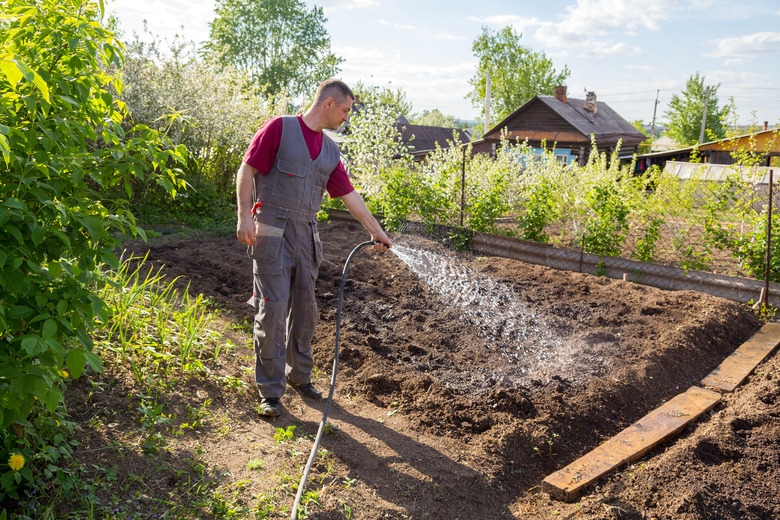How To Make A Soil Wetting Agent
We may receive a commission on purchases made from links.
Sometimes soils can have problems taking in and retaining moisture. This can be due to conditions like sandy soil, compacted soil, or potting mixes using peat moss. Although commercial wetting agents are available and will help the soil regain its moisture retentiveness, you can also make a homemade surfactant wetting agent with regular dish soap and water. This simple solution will help your soil once again retain moisture and lead to healthy plant growth.
Improving Moisture Retention in Soil
Improving Moisture Retention in Soil
You can easily test the degree to which your soil repels water by performing a water repellency test. Place several drops of water on dry, powdered soil that isn't compacted and see how long it takes the soil to absorb it. If the droplets flatten and sink into the soil in five seconds or less, your soil is normal. However, if it takes longer, your soil is somewhat repellent or hydrophobic, and using a soil wetting agent will be beneficial.
Most gardeners have dealt with hydrophobic soil at one time or another, whether in the garden or a container of soil that's completely dried out. When you irrigate, the water runs down the pot's inner sides instead of hydrating the soil mixture. Hydrophobic soil is soil that repels water and doesn't absorb it, and it has difficulty becoming thoroughly wet. When it comes to potting soils, most hydrophobic mixes contain peat, which, once it dries out, has difficulty in taking in the water again, as it repels water and shrinks. Using a DIY soap-based soil wetting agent will solve the problem, as will avoiding the use of a peat-based potting mix and never allowing the soil to become overly dry.
When the soil in the garden becomes hydrophobic, you can also combat the problem by using a homemade surfactant wetting agent. You can also prevent the problem by incorporating organic matter into the area, which improves moisture retention. Layer the area with about 4 to 6 inches of organic material, like well-rotted manure or compost, and dig into the soil about 6 to 8 inches. This works especially well for compacted or sandy soils.
DIY Soil Wetting Agent
DIY Soil Wetting Agent
You can easily make a wetting agent for soil in pots as well as soil for a bigger space, like a garden. All that's required are mild dish soap, water, and either a watering can or a hose-end sprayer. When soap is added to water, it breaks the surface tension of the water, so it will wet the soil more readily. When using a watering can, mix several drops of dish soap, not a dish detergent, into a gallon watering can filled with water. Slowly stir the soapy mixture so you don't create suds. You can then slowly pour the mixture over the dried potting soil or soil in the garden.
However, if you have a large area of dry soil that requires treating, using a hose-end sprayer works well. Fill the sprayer with dish soap and attach a hose. Adjust the sprayer's application rate to release 1 tablespoon of soap per gallon of water. Turn on the water and you're now ready to start watering the soil. If you get the soapy mixture on plants in the garden, rinse them off with clear water once you're finished treating the soil.
